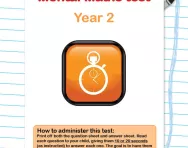Important update from TheSchoolRun
For the past 13 years, TheSchoolRun has been run by a small team of mums working from home, dedicated to providing quality educational resources to primary school parents. Unfortunately, rising supplier costs and falling revenue have made it impossible for us to continue operating, and we’ve had to make the difficult decision to close. The good news: We’ve arranged for another educational provider to take over many of our resources. These will be hosted on a new portal, where the content will be updated and expanded to support your child’s learning.
What this means for subscribers:
- Your subscription is still active, and for now, you can keep using the website as normal — just log in with your usual details to access all our articles and resources*.
- In a few months, all resources will move to the new portal. You’ll continue to have access there until your subscription ends. We’ll send you full details nearer the time.
- As a thank you for your support, we’ll also be sending you 16 primary school eBooks (worth £108.84) to download and keep.
A few changes to be aware of:
- The Learning Journey weekly email has ended, but your child’s plan will still be updated on your dashboard each Monday. Just log in to see the recommended worksheets.
- The 11+ weekly emails have now ended. We sent you all the remaining emails in the series at the end of March — please check your inbox (and spam folder) if you haven’t seen them. You can also follow the full programme here: 11+ Learning Journey.
If you have any questions, please contact us at [email protected]. Thank you for being part of our journey it’s been a privilege to support your family’s learning.
*If you need to reset your password, it will still work as usual. Please check your spam folder if the reset email doesn’t appear in your inbox.
What is mental maths?

What does mental maths mean?
The concept of mental maths still means being able to give an answer to a maths question after thinking about it, rather than making notes on paper, but in school mental maths skills are expanded to include being able to truly understand maths concepts and solve problems in a logical, methodical way.
What mental maths skills are taught?
Children will always be taught to calculate in their head, but it’s not until Key Stage 1 that they’ll start to learn specific strategies to plan how they’d solve problems mentally.
For instance, in Year 1 they’ll learn to add by putting the largest number first, then counting up by the smaller number. They’ll also learn to add near doubles (5+4, 7+6) by knowing what adding the double would be, then increasing the value by 1, etc.
As they progress through Key Stage 2, they’ll use their knowledge of times tables to multiply and divide with increasing speed and accuracy.


FREE Mental Maths challenges pack
- 6 mental maths tests
- Mental maths skills
- PLUS Mental maths worksheets for each school year
Is mental maths tested in SATs?
Children will need to use mental maths skills in Key Stage 1 and Key Stage 2 SATs, particularly in the Year 6 arithmetic paper 1.
How can I help my child with mental maths at home?
There are a number of ways to work mental maths practice into everyday situations. For example, doubling a recipe, counting change, double-checking till receipts and scoring a game of Scrabble all involve using a knowledge of basic maths operations to work out the answers.
Download our mental maths tests for Year 1, Year 2, Year 3, Year 4, Year 5 or Year 6 so your child can develop the quick problem-solving skills they need in an exam situation. Or, print off our division speed grids and multiplication drills to help your child memorise their times tables and think of answers more and more quickly.
You can also use maths SATs past papers to practise the mental maths sections, and become familiar with how the mental maths tests are administered. Each paper includes questions for you to read out, plus instructions on how to time your child and then mark their answers.








